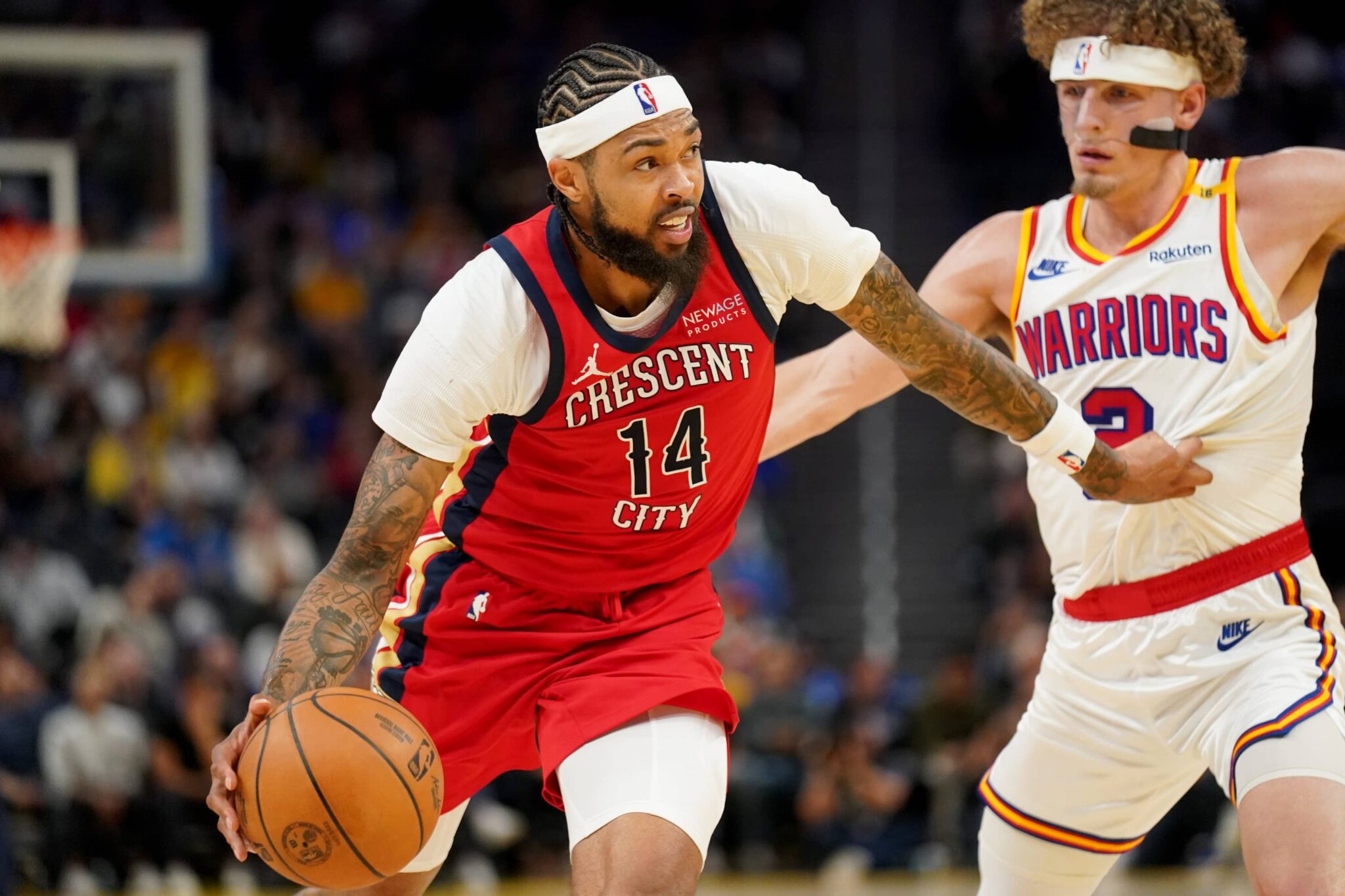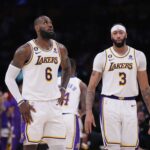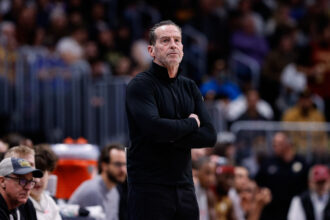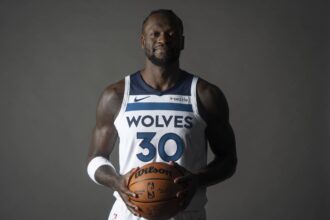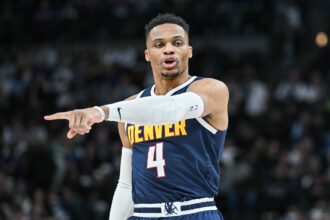Brandon Ingram is showing out early this season, averaging a solid 22.4 points, 6.4 rebounds, and 4.0 assists per game over the first stretch. He’s been efficient, hitting nearly 52% of his shots and stepping up as a leader in clutch moments, like his recent game-winner over the Trail Blazers. Ingram also dropped an impressive 33 points against the Bulls on opening night, setting the tone for a start of the season where he’s playing with serious confidence and poise.
With Ingram on an expiring contract and set to be a free agent in 2025, his value is rising fast, but it’s also making the Pelicans think twice about moving him. His seamless shot creation and scoring boost are invaluable, especially with Zion Williamson dealing with injuries early on. If Ingram keeps up this level of play, any team wanting him will need to pay up big time, and the Pelicans might even consider offering him a long-term extension to keep their wing duo intact for a potential playoff run.
What Could The Pelicans Get For Him?
Given Brandon Ingram’s current level of play, the Pelicans could command a solid haul if they decided to move him. Ingram’s offensive skills and recent performances have bolstered his stock, making him a prime target for teams looking to add a versatile, high-scoring wing. A fair starting point in negotiations would likely involve at least one unprotected first-round pick, plus additional picks or pick swaps, especially from teams aiming to secure long-term assets. With his scoring average near 25 points per game and his improved playmaking and efficiency, Ingram is the kind of player who could sway a playoff race, so teams may be willing to part with multiple picks or high-potential assets.
Ingram’s value also makes it plausible for the Pelicans to seek a current All-Star or near All-Star-level player in return, someone who can immediately fill a role and potentially contribute alongside Zion Williamson. Teams like the Kings, who have been linked to Ingram before, might consider a package centering around solid starters, like Keegan Murray or Kevin Huerter, plus picks, allowing them to keep their core while adding Ingram as an upgrade besides DeMar DeRozan on the wing.
For the Pelicans, a desirable trade could also involve acquiring a big man or a forward who complements Zion better, addressing some of the team’s spacing issues. They could seek out younger talents with potential upside in a swap—players who, while not yet All-Star caliber, could grow into valuable pieces in the Pelicans’ rotation. Adding someone versatile on defense with range, plus draft assets, would strengthen the Pelicans for the long term while keeping them competitive now with a core of CJ McCollum, Dejounte Murray, and Zion Williamson.
Overall, Ingram’s trade value is high enough that the Pelicans could expect more than just draft capital or mid-tier players; they could realistically look for a combination of picks, a quality role player, and potentially even a player with borderline All-Star potential. This trade market could be hot, especially among teams on the playoff fringe that see Ingram as a final piece for a deep playoff run.
A Potential Warriors Deal On The Table
Brandon Ingram to the Warriors could give Golden State exactly what they’re missing behind Stephen Curry—a reliable 20+ points-per-game scorer who can handle the ball, create his own shot, and stretch the floor. The Warriors, struggling with a dependable second offensive option after Curry (who’s now dealing with an injury), would benefit hugely from Ingram’s skillset. In their recent matchup, Ingram dropped 30 points on Golden State, showcasing why he could thrive as a versatile wing scorer alongside the Warriors’ core.
The potential trade package would likely include Andrew Wiggins, Jonathan Kuminga, and Golden State’s 2026 first-round pick. Wiggins, while solid, hasn’t reached the All-Star level the Warriors hoped for, and Kuminga’s role has become even more uncertain this season. As a pending restricted free agent, Kuminga didn’t agree to an extension with the Warriors, and he’s now seeing fewer minutes off the bench. Moving both Wiggins and Kuminga allows Golden State to bring in a player ready to contribute immediately at a high level, and Ingram fits that bill perfectly.
This deal would also work well for the Pelicans. They’d gain a younger asset in Kuminga, who could shine with more opportunities and possibly anchor the team’s bench scoring. Wiggins brings playoff experience and would slot in as a strong defender and secondary scorer, supporting Zion Williamson’s inside game. Adding the 2026 pick gives New Orleans more draft capital to either develop talent or trade for another piece down the line, keeping their long-term options open.
For the Warriors, Ingram provides immediate scoring, offensive versatility, and the potential to lighten Curry’s load, especially with Klay Thompson’s production declining. If Golden State wants to stay in title contention, they need a player like Ingram who can shift defenses and make them a more dynamic offensive unit.
Can The Cavs Get Even Better With Brandon Ingram?
The Cavaliers are off to a blazing 5-0 start, and it’s clear this team is hungry to make a real run in the East. But let’s face it—while Cleveland’s backcourt of Donovan Mitchell and Darius Garland is electric, they’re still missing that wing scorer who can really elevate them. That’s where Brandon Ingram comes in. Adding Ingram to this lineup could give the Cavaliers the extra firepower they need, especially against tougher playoff matchups where they’ll need more than just their guard duo to carry the load.
Right now, the proposed deal would send Caris LeVert, Max Strus, Ty Jerome, and a future first-round pick in 2031 to the Pelicans in exchange for Ingram. LeVert and Strus have been solid, but neither offers the scoring punch or the consistency that Ingram brings with his scoring. He’s also a perfect fit for Cleveland’s system, where his shot creation would help open up the floor for Mitchell and Garland. Imagine how tough the Cavaliers’ offense would be with Ingram drawing defenders on the wing while Mitchell or Garland attacks from the perimeter.
For the Pelicans, this trade could make sense too. They’d be gaining solid rotational players in LeVert and Strus, both capable of providing shooting and playmaking in different lineups. Plus, they get a future first-round pick, which gives them flexibility as they continue to build around Zion Williamson. With Ingram in the final year of his contract and his fit with Zion sometimes looking clunky, the Pelicans might see this as a smart way to get value before risking losing him for nothing.
Ingram’s scoring and wing versatility are exactly what the Cavs need to turn their hot start into a deep playoff run. Adding him would give Cleveland a lineup that can genuinely compete with the best in the East, especially when facing wing-heavy teams like the Celtics or Bucks. If they want to capitalize on this 5-0 momentum and signal to Mitchell that they’re serious about winning, making a move for Ingram could be the perfect play.
A Spark The Pacers Need To Turn Their Season Around
The Pacers are off to a rocky start this season, currently sitting at 2-3 after some tough losses but an amazing win against the Celtics. Coming into the season with high hopes after reaching the Eastern Conference Finals last year, the Pacers have struggled to find its rhythm. Tyrese Haliburton, their All-Star playmaker, has had a rough start, including a scoreless game against the Knicks and inconsistent shooting from deep, currently hitting well below his usual efficiency. He did manage to bounce back with a clutch three-pointer to force overtime in their recent matchup against the 76ers, where he finished with 22 points, but missed critical free throws that could have tied the game in OT.
Adding Brandon Ingram could be the boost the Pacers need to stabilize their offense. Ingram’s scoring prowess would take pressure off Haliburton, allowing him to focus more on facilitating and less on scoring in isolation. This season, the Pacers have been outmatched on the boards, getting outrebounded heavily by teams like the 76ers, which highlights their need for a versatile forward who can contribute on both ends. Ingram, with his scoring and rebounding, would complement Indiana’s fast-paced style and give them a reliable wing scorer, something they’re currently missing.
The proposed trade package—sending Obi Toppin, Aaron Nesmith, Jarace Walker, and a 2028 future pick—could appeal to both sides. For the Pacers, this trade would signal they’re serious about making another deep playoff run. And for the Pelicans, this deal brings in young players who could grow alongside Zion Williamson while providing future draft assets. Walker’s defensive versatility and Toppin’s athleticism would add depth and flexibility for New Orleans, who may be cautious about re-signing Ingram on a big extension next summer.
Ultimately, if the Pacers want to recover from their early-season struggles and add firepower alongside Haliburton, taking a swing on Ingram could be just the play they need. This move could give the Pacers a balanced “Big Three” with Haliburton, Siakam, and Ingram, positioning them to be a legitimate threat in the East and a team no one wants to face come playoff time.
What’s The Best Decision For The Pelicans?
The Pelicans have a big choice ahead with Brandon Ingram, especially given his rumored demand for a four-year, $210 million extension. That’s a hefty price tag for a player who’s shown All-Star capabilities but hasn’t consistently proven to be a game-changer in terms of wins. While Ingram’s scoring and playmaking are valuable, New Orleans needs to decide if he’s truly worth that kind of long-term investment or if it’s smarter to leverage his value now, especially considering he’s in the final year of his contract.
The timing here is crucial with Dejounte Murray currently sidelined due to a fractured left hand, which is expected to keep him out for about four weeks. Ingram has been stepping up in Murray’s absence, showing he can take on a primary role. But the real test will be if he can maintain this performance once Murray returns. Murray’s playmaking and defensive skills could complement Ingram well, but there’s also the question of whether two ball-dominant players will mesh or clash on the court. If Ingram can adapt and thrive with Murray back, it makes a stronger case for offering him the extension. If not, the Pelicans might be better off exploring trade options.
Trading Ingram could allow the Pelicans to bring in pieces that better suit Zion Williamson’s game and the team’s overall structure. They’d have the opportunity to address other needs, like adding consistent shooters or more frontcourt assets, which could improve their balance. On the flip side, letting go of Ingram would mean sacrificing an established scorer who’s capable of handling the offense on his own when needed—a luxury that’s hard to replace.
In the end, the Pelicans’ best move may come down to how Ingram performs once the team is back at full strength. If he proves he can adapt alongside Murray and Zion, a long-term commitment might make sense. But if there are signs that his presence creates spacing issues or limits Murray’s playmaking, New Orleans should seriously consider moving on while his trade value is high.

